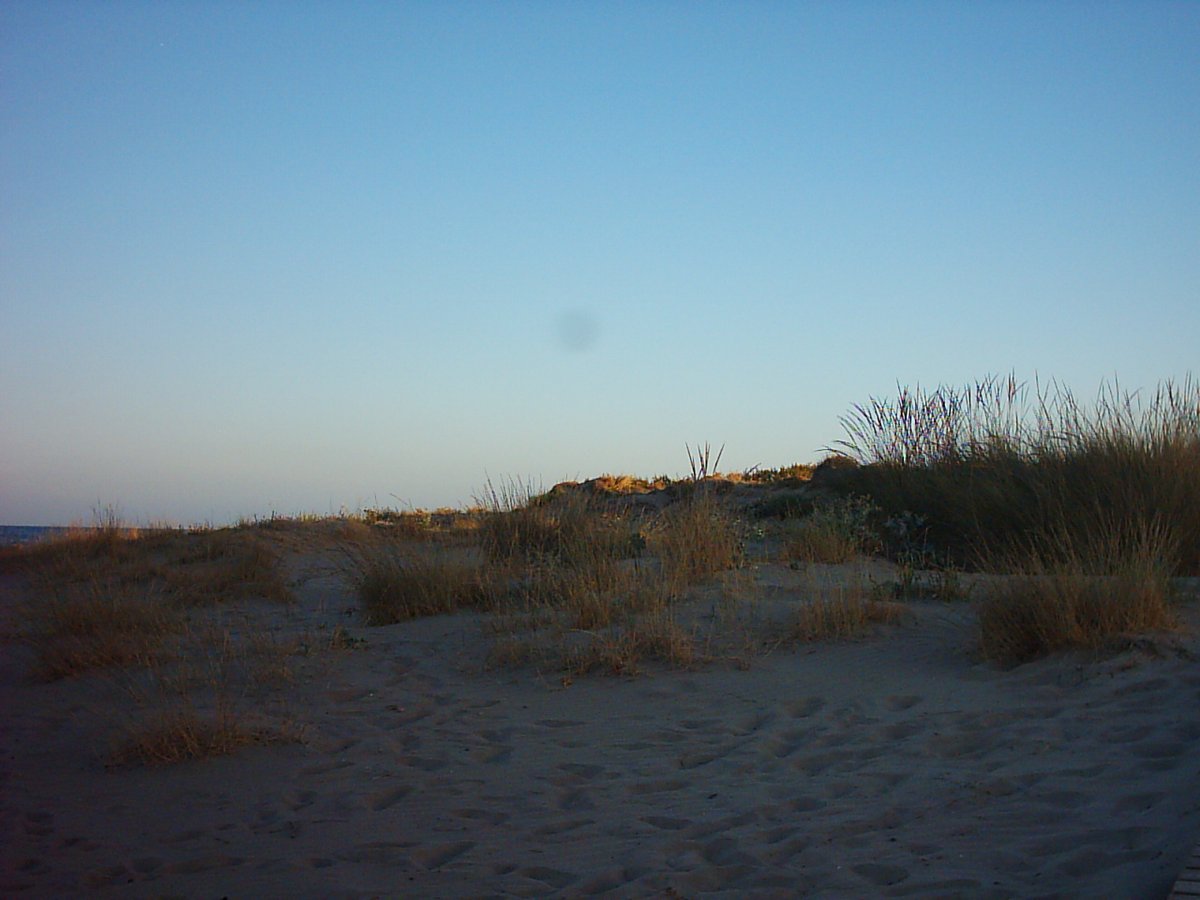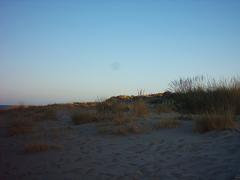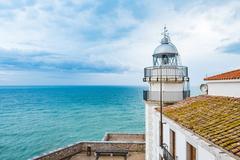
Visiting Camí de l’Atall in Peniscola Spain: Hours, Tickets, and Tips
Date: 24/07/2024
Introduction
Peniscola, often described as the ‘Gibraltar of Valencia’ or ‘The City in the Sea,’ is a captivating destination with a rich and diverse history. Situated on a rocky promontory along the Mediterranean coastline, this town has been a significant stronghold and trading post for various civilizations over millennia. The Camí de l’Atall, a picturesque coastal path in Peniscola, offers not only breathtaking views but also a journey through centuries of historical significance. From the Iberians and Phoenicians to the Greeks, Carthaginians, and Romans, every corner of Peniscola echoes the tales of its storied past. One of the most prominent historical landmarks is the iconic Castillo del Papa Luna, constructed by the Knights Templar in the 13th century and later becoming the residence of Antipope Benedict XIII. This report provides an in-depth exploration of the historical significance, cultural attractions, practical visitor information, and travel tips for those planning to visit Camí de l’Atall and Peniscola.
Table of Contents
- Introduction
- Ancient Origins and Early Inhabitants
- Phoenician and Greek Influence
- Carthaginian and Roman Era
- Medieval Period and the Knights Templar
- The Avignon Papacy and Antipope Benedict XIII
- Renaissance and Modern Periods
- Cultural and Historical Attractions
- Festivals and Cultural Events
- Visitor Information
- FAQ
- Conclusion
Exploring Camí de l’Atall in Peniscola - Visiting Hours, Tickets, and Historical Significance
Ancient Origins and Early Inhabitants
The history of Peniscola is deeply rooted in its strategic location on a rocky headland. The area has been inhabited since ancient times, with the earliest known settlers being the Iberians. The town’s name, Peníscola, is derived from the Latin word “peninsula,” reflecting its geographical formation.
Phoenician and Greek Influence
Following the Iberians, the Phoenicians established a settlement in the area, naming it Tyreche. This was later followed by Greek colonization, during which the town was known as Chersonesos, meaning “peninsula” in Greek. These early civilizations recognized the strategic importance of Peniscola’s location, which provided a natural fortress and a vantage point over the Mediterranean Sea.
Carthaginian and Roman Era
The Carthaginians, under the leadership of Hamilcar Barca, captured Peniscola, further cementing its role as a significant military and trading post. According to legend, it was here that Hamilcar made his son, Hannibal, swear an oath to never befriend Rome, a vow that would have far-reaching consequences in the Punic Wars.
Medieval Period and the Knights Templar
The medieval period saw the construction of the iconic Castillo del Papa Luna, built by the Knights Templar between 1294 and 1307. This fortress, perched on the rocky peninsula, became a symbol of the town’s resilience and strategic importance. In 1319, the castle was taken over by the Order of Montesa and later ceded to the Supreme Pontiff.
The Avignon Papacy and Antipope Benedict XIII
One of the most intriguing chapters in Peniscola’s history is its association with Antipope Benedict XIII, also known as Pedro de Luna. From 1417 until his death in 1423, Benedict XIII made the castle his residence, turning it into a center of schismatic activity during the Western Schism. The castle’s name, Castell del Papa Luna, and the nearby Bufador del Papa Luna cavern, commemorate his legacy.
Renaissance and Modern Periods
The Renaissance period saw Peniscola continue to play a vital role in regional politics and trade. The town’s fortifications were strengthened, and it became a bustling seaport. In the 20th century, Peniscola gained international fame as a filming location for the movie “El Cid” in 1960, which led to the restoration of the castle and the addition of new walls.
Cultural and Historical Attractions
Today, Peniscola is a popular tourist destination, known for its rich history and well-preserved medieval architecture. The historic center of Peniscola, with its steep and narrow streets lined with whitewashed houses, offers a glimpse into the town’s storied past. Key attractions include:
-
Peñíscola Castle: Built by the Knights Templar in the 13th century, this fortress stands majestically on a crag overlooking the sea. The castle’s Gothic-romantic architecture, complete with barrel vaulting and round arches, transports visitors back in time.
- Visiting Hours: Daily, 9:30 AM – 8:00 PM
- Ticket Prices: Adults €5, Children €3
- Guided Tours: Available upon request
-
El Bufador: A natural tunnel inside the rock that runs through the crag and leads to the city center. This geological marvel is a result of natural erosion and stands at a height of seven meters. Visitors can experience the power of the sea as waves crash through the tunnel, creating a unique and awe-inspiring spectacle.
-
Museo del Mar: Housed in an ancient fortification, the museum is dedicated to preserving the maritime heritage of Peñíscola. It features exhibits on the history, archaeology, fishing, and marine life of the region.
- Visiting Hours: Tuesday to Sunday, 10:00 AM – 2:00 PM, 4:00 PM – 7:00 PM
- Ticket Prices: Free Admission
-
Casa de las Conchas: A unique landmark covered entirely with seashells, creating a striking visual effect. The house holds a legend that adds to its mystique and is often adorned with flowers, framed by the white and blue houses characteristic of Peñíscola’s old town.
-
Lighthouse of Peñíscola: Built in 1892, the lighthouse’s light reaches up to 35 miles (65 km) out to sea. It serves as a beacon for sailors and adds to the charm of the coastal landscape.
-
Irta Mountain Range: This mountain range offers numerous opportunities for hiking and exploring the rugged terrain. Key attractions within the range include the Ermitorio of San Antonio and a medieval watchtower.
-
La Porteta Fishing Port: Modernized between 1922 and 1925, visitors can take embarkations called ‘golondrinas’ (swallows) to enjoy a view of the coast from the sea.
Festivals and Cultural Events
Peniscola hosts several cultural events that celebrate its historical and artistic heritage. The International Festival of Ancient and Baroque Music, held every summer since 1996, and the International Jazz Festival of Peniscola, established in 2004, are major attractions. These festivals feature performances in historic venues, adding to the town’s charm and appeal.
Visitor Information
Visiting Hours and Tickets
The Castillo del Papa Luna is open to visitors daily, with extended hours during the summer months. Tickets can be purchased at the entrance or online through the official website. Prices vary, with discounts available for children, students, and seniors.
Travel Tips
For those planning to visit Peniscola, the best way to explore the town is on foot, allowing you to fully appreciate its historical sites and scenic views. The castle is a must-visit, offering panoramic views of the Mediterranean and insights into the town’s medieval past. Guided tours are available, providing detailed information about the castle’s history and its role in various historical events.
Practical Information
Peniscola is accessible from Valencia, with options to drive or take a train to the nearby Benicarló stop, followed by a short taxi ride into town. The town offers a range of accommodation options, from beachfront hotels to charming guesthouses in the old town. During the summer months, Peniscola’s beaches, such as Playa Norte, are perfect for relaxation and water sports, while the town’s vibrant cultural scene ensures there is always something to see and do.
FAQ
What are the visiting hours for Camí de l’Atall?
The pathway is open to visitors all day, but the best time to visit is during daylight hours to fully appreciate the historical sites and scenic views.
How much are tickets for Peniscola’s historical sites?
Ticket prices for the Castillo del Papa Luna vary, with discounts available for children, students, and seniors. It is recommended to check the official website for the latest prices and available discounts.
Conclusion
The historical significance of Camí de l’Atall in Peniscola is a testament to the town’s enduring appeal and strategic importance throughout the ages. From its ancient origins to its role in medieval and modern history, Peniscola offers a rich tapestry of cultural and historical experiences for visitors to explore. Be sure to plan your visit to fully immerse yourself in the charm and history of this remarkable town.
Call to Action
For more information and updates about Peniscola, download our mobile app, check out our other related posts, or follow us on social media. Plan your visit today and discover the rich history and beauty of Peniscola!
References
- A day trip to the old town of Peniscola, 2024, Live The World (source)
- What to see in Peniscola, 2024, Fascinating Spain (source)
- Peniscola travel guide, 2024, Spain This Way (source)
- Peniscola travel guide, 2024, Travel Inspires (source)
- Peniscola travel guide, 2024, Turismo de Castellon (source)
- Peniscola city guide, 2024, Spain Info (source)

